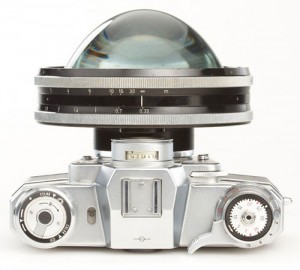This got sufficient praise when I posted it as a comment to a question on LiveJournal that I’m reprinting it as an article here, where I can find it when needed. The question was initially about Sigma vs. Nikon lenses. I currently consider Sigma, Tokina, and Tamron to be the third-party lensmakers who sometimes make first-rate mainstream lenses (no offense intended to specialists and weird people like Zeiss, Cosina/Voigtlander, or Coastal Optics (now a division of Jenoptik Optical Systems, it looks like)).
*Â Â *Â Â *Â Â *Â Â *
Who’s ahead in which parts of their lens lineup changes over time—so one thing that influences the advice you get is the age of the adviser. I’m 55 myself :-).
For a while, zoom lenses were only made by third-party companies (absolute statements probably aren’t absolutely true, but this is how I perceived it in the 1970s). Then the camera companies made overly-conservative zooms, and the third-party companies made better zooms. This covered parts of the 80s. Then the camera companies started making first-rate zooms.
Also, the camera-companies started making second- and third-rate zooms, and even some primes. And the third-party companies didn’t always do their best anyway.
So, TODAY, IMAO, the situation is confused to the point where there’s no simple general advice. You have to specifically consider each type of lens and decide which ones are good and which aren’t. Nikon isn’t ALWAYS better or worse than Canon—or than Sigma, either. (Sigma was a third-tier company even 10 years ago, but they aren’t today.)
One thing to keep in mind is that, if you’re buying Nikon’s consumer-grade lenses like the 18-200 or the 70-300, there’s a lot less to lose going to Sigma, Tamron, or Tokina. Those aren’t Nikon’s top work. Similarly, the Sigma 120-400/4.5-5.6 may actually be better than the Nikon 80-400/4.5-5.6 (though Nikon just did or is about to update that lens, so who knows?). It’s the Nikon 200-400/4, the $5000 professional lens, that Sigma probably doesn’t have a real competitor for.
Also remember that wide-range zooms always carry compromises. You simply can’t make an 18-200 and sell it for a 3-figure price that’s first-rate throughout. However, the convenience can be important, and the quality might be good enough for you. Don’t pretend you always need “the best”—at least not while talking about a D40x :-). Be realistic, it’ll stand you in good stead; probably save you thousands of dollars. Junk is never worth it, but the very best is probably completely out of your reach, too. You HAVE TO compromise—and even the “very best” has flaws which the people who use its full capabilities all know about and have to work around. The best photographers I know don’t own a single piece of “perfect” equipment; instead they own lots of very good equipment that they fully understand. They avoid using it for the things it’s bad at.
You’re probably better off with Sigma’s pro-grade lenses than with Nikon’s consumer-grade lenses. Although every now and then, a consumer-grade lens happens to be really outstanding anyway. (As a rough guideline, fixed-aperture zooms, especially if the aperture is fast for the focal lengths, are nearly always considered pro-grade lenses. Slow, variable-aperture zooms are nearly always consumer lenses. Primes are nearly always pro-grade lenses. I believe Sigma uses the “EX” designation for what THEY think are the pro-grade lenses. But even this is, in the end, a matter of opinion.)
And if you want the very best autofocus 50mm/1.4—that’s almost certainly the Sigma; but it costs a lot more than the Nikon. (The Zeiss manual focus 50/1.4 may be better, partly depending on what you care about.)
When reading customer reviews, consider the number sold. Something sold by the tens of thousands is nearly certain to have more bad reviews than something sold by the tens. 🙂
Here’s a trick I used. I still think it’s clever. Go someplace like photo.net where you can search by the lens, and look at the pictures taken with each lens you’re considering. Some kinds of problems won’t show up at web resolution, others will. But in addition to what you can see yourself, there’s a second source of information: If a number of photographers who take really gorgeous pictures all use a particular lens, you’re pretty safe in concluding that lens is pretty good. This path led me to the Tokina 12-24/4, which indeed was a fine lens (and quite cheap), and which served me well when I was on a DX sensor.

